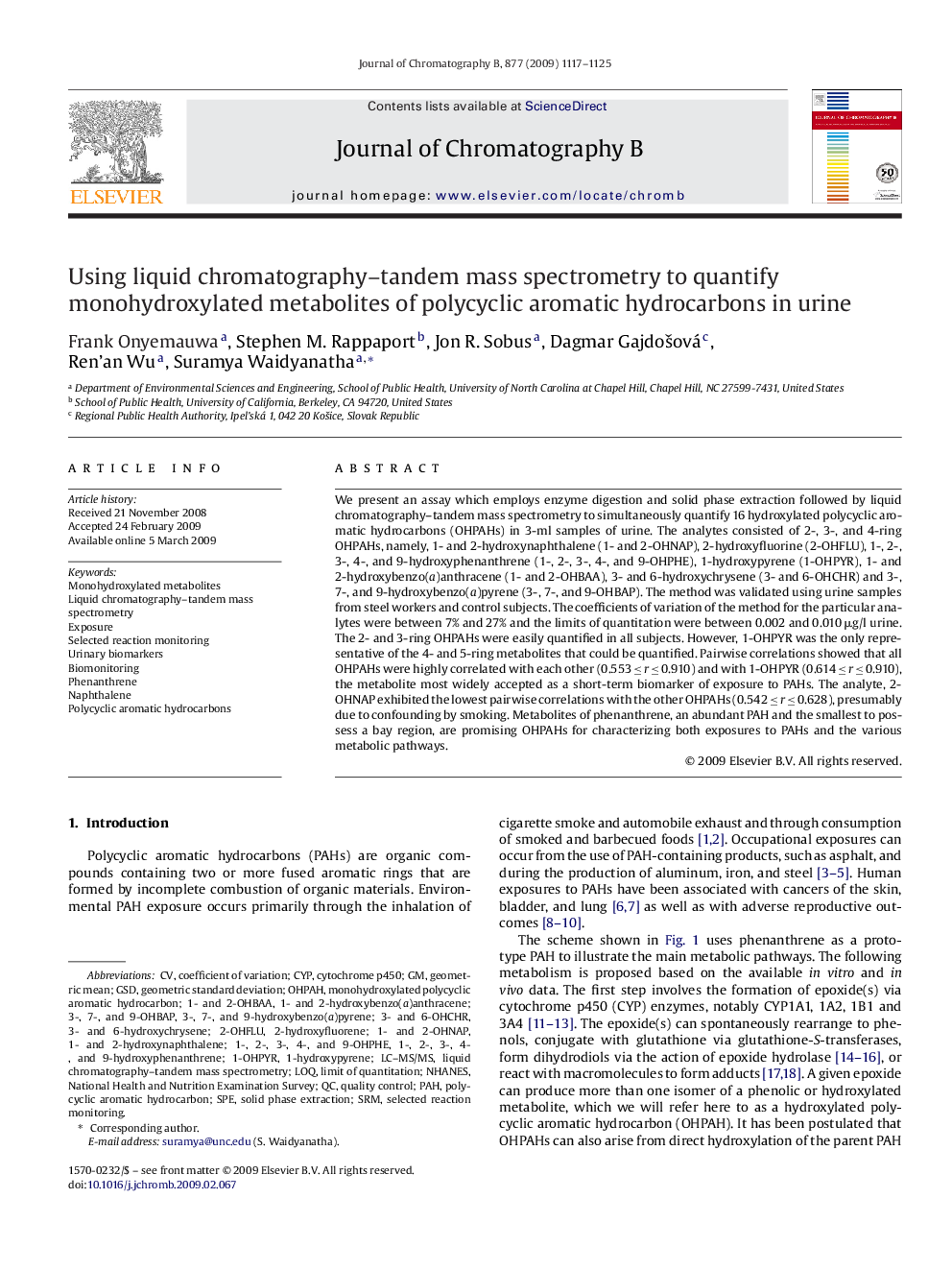| Article ID | Journal | Published Year | Pages | File Type |
|---|---|---|---|---|
| 1216242 | Journal of Chromatography B | 2009 | 9 Pages |
We present an assay which employs enzyme digestion and solid phase extraction followed by liquid chromatography–tandem mass spectrometry to simultaneously quantify 16 hydroxylated polycyclic aromatic hydrocarbons (OHPAHs) in 3-ml samples of urine. The analytes consisted of 2-, 3-, and 4-ring OHPAHs, namely, 1- and 2-hydroxynaphthalene (1- and 2-OHNAP), 2-hydroxyfluorine (2-OHFLU), 1-, 2-, 3-, 4-, and 9-hydroxyphenanthrene (1-, 2-, 3-, 4-, and 9-OHPHE), 1-hydroxypyrene (1-OHPYR), 1- and 2-hydroxybenzo(a)anthracene (1- and 2-OHBAA), 3- and 6-hydroxychrysene (3- and 6-OHCHR) and 3-, 7-, and 9-hydroxybenzo(a)pyrene (3-, 7-, and 9-OHBAP). The method was validated using urine samples from steel workers and control subjects. The coefficients of variation of the method for the particular analytes were between 7% and 27% and the limits of quantitation were between 0.002 and 0.010 μg/l urine. The 2- and 3-ring OHPAHs were easily quantified in all subjects. However, 1-OHPYR was the only representative of the 4- and 5-ring metabolites that could be quantified. Pairwise correlations showed that all OHPAHs were highly correlated with each other (0.553 ≤ r ≤ 0.910) and with 1-OHPYR (0.614 ≤ r ≤ 0.910), the metabolite most widely accepted as a short-term biomarker of exposure to PAHs. The analyte, 2-OHNAP exhibited the lowest pairwise correlations with the other OHPAHs (0.542 ≤ r ≤ 0.628), presumably due to confounding by smoking. Metabolites of phenanthrene, an abundant PAH and the smallest to possess a bay region, are promising OHPAHs for characterizing both exposures to PAHs and the various metabolic pathways.
